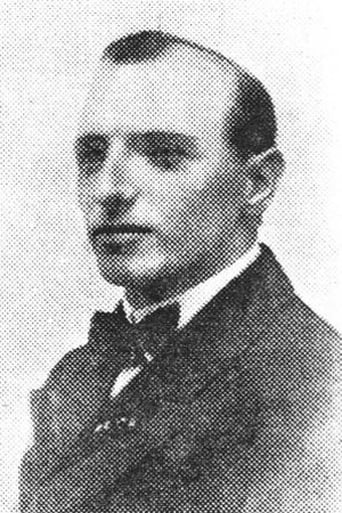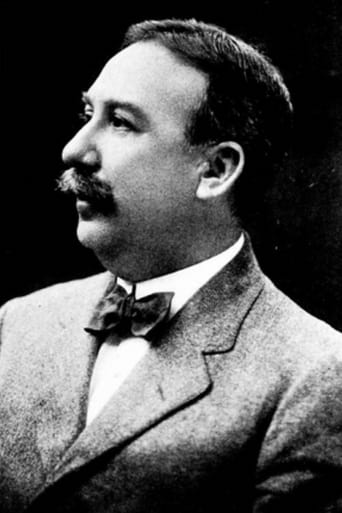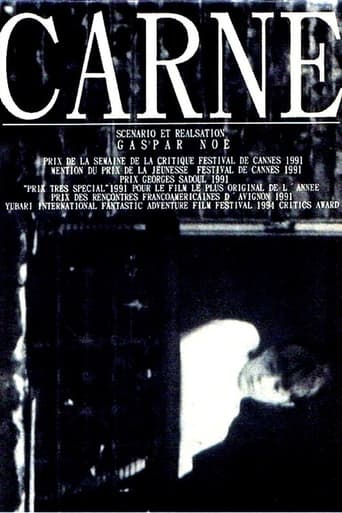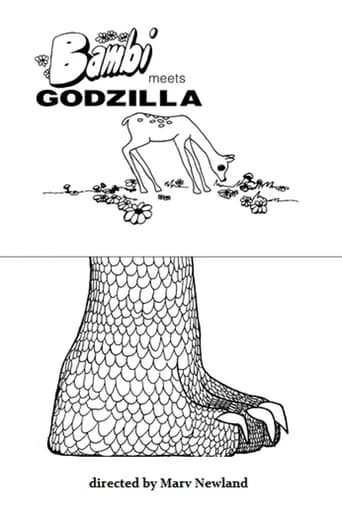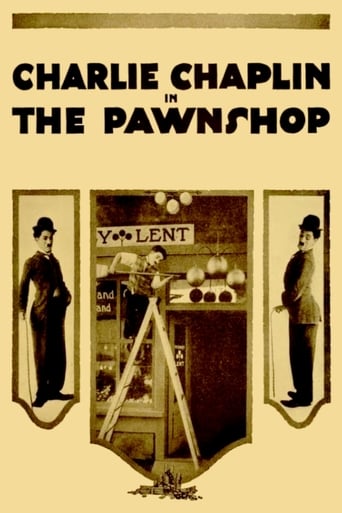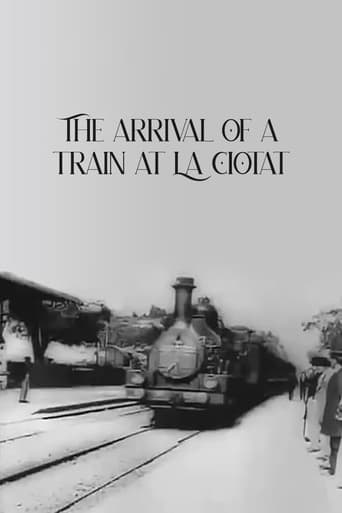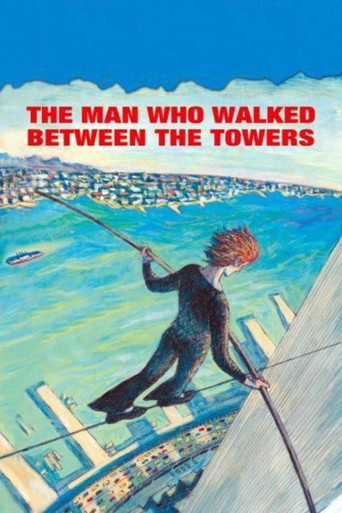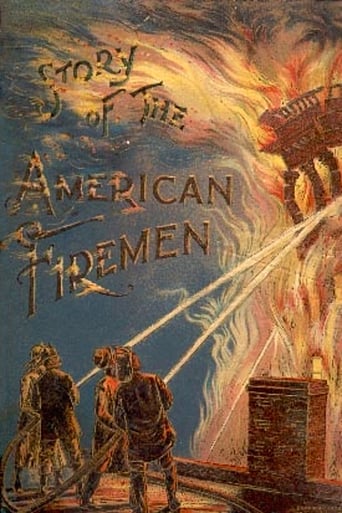
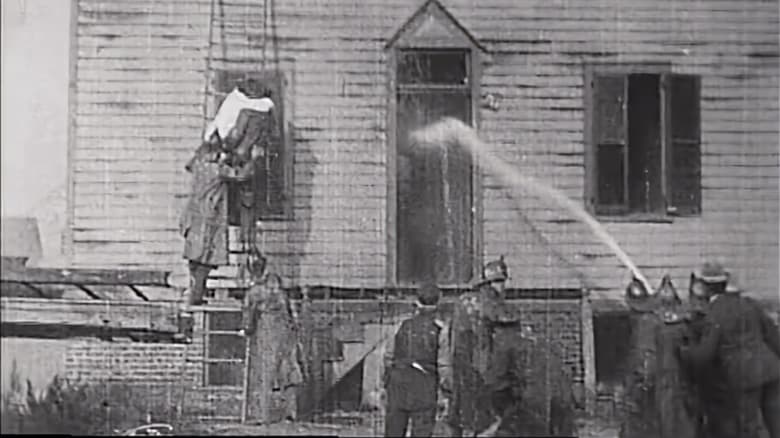
Life of an American Fireman (1903)
Porter's sequential continuity editing links several shots to form a narrative of firemen responding to a house fire. They leave the station with their horse drawn pumper, arrive on the scene, and effect the safe rescue of a woman from the burning house. But wait, she tells them of her child yet asleep in the burning bedroom...
Watch Trailer
Cast


Similar titles
Reviews
. . . as opposed to the grand documentary suggested by the Edison title. I've seen many bits and pieces from this 6 minute, 45.28 second crazy quilt in other Edison shorts from the previous decade (some from possibly ACTUAL fire runs with REAL firemen!). The long ending sequence at the prop house with smoke machines and histrionic actors was especially familiar to Edison peep show viewers who were repeat dupes--I mean, customers. If you watch this mish-mash closely, it makes little sense. The part I find most ludicrous is the lingering shot of the alarm being sounded by someone pulling the lever inside a fire box. This alarm box is located on a city sidewalk, and the fire turns out to be in the suburbs at a frame house five or ten miles away! Presumably, old Tom's entertainment empire henchmen thought so little of their viewers' intelligence that they would assume a passerby could see a fire, saunter for an hour or two till reaching the big city call box, pull the alarm, wait for three different convoys of fire vehicles to reach the country, arriving just as the lady of the house (who has apparently been stumbling around in the smoke FOR 3 HOURS!) finally collapses onto a conveniently placed bed. I've heard of the suspension of disbelief, but Thomas Edison figured his suspenders reached to the moon!
Director Edwin S. Porter ignites things early in Life of an American Fireman with little let up in this 1903 display of narrative filmmaking. Porter literally juxtaposes (early split screen) exposition before sounding the alarm for the smoke eaters to jump into action. After some firehouse mobilization we are treated to a stunning parade of galloping fire engines in what looks to be a twelve alarm fire. Arriving at the fire (actually more smoke) engulfed home the firemen battle their way into the house to save woman and child. Fireman has all the visual and circumstantial elements of suspense and action. It is the Towering Inferno of its day filled with human drama and in the balance moments. Porter's action is both non-stop and engrossing and if he needed any indication that this stuff had a future for making money he need look no further to the crowd quickly multiplying to watch the racing fire chariots in a top rate action film from this early period of film.
"Life of an American Fireman" is a landmark early story film, which features techniques and style that its director Edwin S. Porter and the Edison Company would use later in 1903 for the more famous "The Great Train Robbery". As with that film, "Life of an American Fireman" employed an action plot (rescue from fire instead of train robbers) and covers a large space—from the fire department to the burning building—requiring a series of shots and an ordering of spatial and temporal relations as the action progressed and allowing for dramatic excitement within its nine scenes and 425 feet of film.Until recently, "Life of an American Fireman" was an especially misunderstood early film. The Museum of Modern Art (MoMA) acquired a print that consisted of fifteen shots, with crosscutting between the film's original final two scenes of the rescue of the mother and child from the fire. Despite it contradicting the Edison Company's catalogue description and early cinema film-making strategies adopted elsewhere by Porter and the Edison Company, the print led to erroneous histories and appreciation of the film. It's since been established that the Library of Congress paper print of nine shots and no crosscutting is an authentic representation of the film that the Edison Company produced and distributed, and that the MoMA print had been reedited in more modern times to conform to new editorial sensibilities. While the film was innovative for its part in the development of the story film, especially in America, it was just as much a product situated in its time as any other, with no such anachronistic crosscutting. (Although there are a few early examples of brief and undeveloped crosscuts, it didn't become a common editing practice until a few years later, perhaps, most remarkably employed by D.W. Griffith at Biograph.)The film's final scene is a temporal replay, or overlap, of the previous scene; that is, we first see the rescue in its entirety from the interior view of the building and then see it again in its entirety but from the exterior view. (By the way, there's a continuity error when the mother opens the window in the final scene after it hadn't been opened until the fireman opened it in the previous scene.) As Charles Musser ("Before the Nickelodeon") has also pointed out, slighter overlaps appear from shots two to three (an alarm is pulled in shot two, but shot three begins with the firemen asleep), between shots three and four (the firemen are seen twice sliding down the pole), and from shots four to five (the horse-drawn fire engines race off at the end of shot four and then begin their charge again in shot five after the gates are opened). Georges Méliès employed similar overlapping in "A Trip to the Moon" (Le Voyage dans la lune) (1902) when the rocket lands on the moon. Porter had used temporal replays in his earlier film "How They Do Things on the Bowery" (1902) and continued to do so in "The Great Train Robbery" and subsequent productions.Another oddity in this film from a modern perspective, but which was common practice in early cinema, was the tendency to show an action from one camera angle from its beginning to its end, from inaction to until the action is completed or to begin shots about when or even before figures enter a frame and remaining on the scene until all or nearly all of them leave the frame. This has been called an "operational aesthetic"; that is, early filmmakers were more concerned with staging and capturing the process of operations in the action, as opposed to more cutting to action in progress to create excitement by pacing. The panning in shot seven is an interesting exception, as the camera comes to action at the site of the burning building already in progress.Two other interesting scenes in this film are the close-up insert shot of the fire alarm and the opening scene-within-a-scene showing the fireman's dream. The dream may be his longing for his wife and child, or it may be a premonition of the peril of the mother and child from the burning building to come, or it may be both. The double-exposure photography and its use for scenes-within-scenes had been around for a while by 1903. An early example of its use is George Albert Smith's "Santa Claus" (1898). Méliès was also quite fond of it, and Porter had previously created such dreams in "Jack and the Beanstalk" (1902).The fire rescue genre of early cinema dates back to the Edison Company's "Fire Rescue Scene" (1894), a single shot-scene staged in the cramped "Black Maria" studio. In numerous actualities, or documentary films, cameramen took to chasing firefighters and recording their actions in containing fires. An earlier story film to use the fire rescue plot was the British film "Fire!" (1901) made by James Williamson, which contained five scenes in 280 feet of film. Its scenes of horse-drawn fire engines racing and the rescue of persons from a burning home are strikingly similar to those in "Life of an American Fireman". Musser suggests other sources of inspiration for Porter may have been Selig's 450-feet "Life of a Fireman" and Lubin's 250-feet "Going to the Fire and Rescue" (both 1901). Apparently, Lubin, in turn, made an imitation of Porter's film in 1904 with the same title.
At Edison's Company, he experimented with longer films, and was responsible for directing the first American documentary or realistic narrative film, The Life of an American Fireman (1903). Though it's among the earliest story films (but by no means the first as often alleged), The six-minute narrative film combined re-enacted scenes and documentary footage, and was dramatically edited with inter-cutting between the exterior and interior of a burning house. Edison was actually uncomfortable with Porter's editing techniques, including his use of close-ups to tell an entertaining story. For action, excitement, & suspense, Life of an American Fireman rates awfully high, improving on all that went before, borrowing from what came before wherever it was already thrilling.


